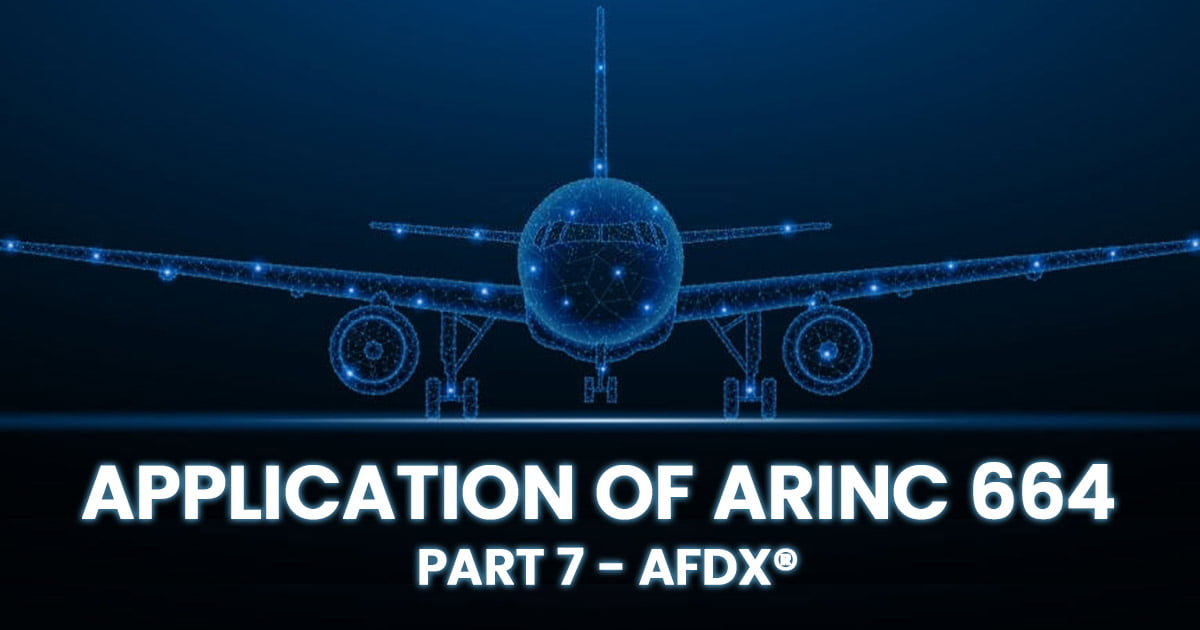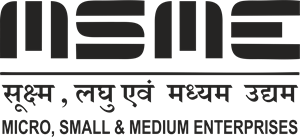Introduction to ARINC 429
ARINC 429: Aeronautical Radio, Inc. is a privately held company known as the ARINC Corporation. Nonetheless, it is a company that works with the Federal Communications Commission (FCC) and the Federal Aircraft Administration (FAA) to create standards for aircraft navigation and communication.
The line separating business and government may so occasionally become hazy. ARINC offers more than just communication services. In the 1940s, ARINC worked with the US military to create military VHF radio communications.
Each of the subsystems, wiring, data buses, and databases used in avionic communications—series 400, 500, 600, 700, and 800—is covered by a variety of requirements included in the ARINC standard. ARINC-429 is the most comprehensive specification out of all the standards defined in ARINC.
This comprehensive glossary of ARINC-429 terms offers a thorough grasp of the protocol and how avionics systems apply it.
Through the course of this guide, readers will acquire a comprehensive comprehension of the structure, data transmission, and reception of the protocol, along with its importance in the aviation sector.
What is ARINC 429?
Founded in 1929, Aeronautical Radio, Inc. ( ARINC) was a privately held company that Collins Aerospace eventually purchased in 2013.
This organization was established to create sets of specifications (standards) for avionics hardware for use by aircraft worldwide. It was founded by several airlines as well as producers of aviation equipment and parts.
The fundamental specifications for digital data communication between commercial avionics systems are outlined in ARINC 429. The specification of signal levels, timing, and protocol features facilitates design implementation and data transmission.
Line Replaceable Units (LRUs) for commercial aircraft are intended to be provided by ARINC 429. To put it simply, the ARINC protocol is intended to facilitate communication within the avionics’ Local Area Network (LAN).
History and Development
The original ARINC 419 Specification for digital communication in commercial aircraft served as the foundation for the development of the ARINC 429 Specification.
First published in 1966 and last amended in 1983, ARINC 419 specifies four wiring topologies, one of which is the ARINC575 or DADS 575 Spec, which is a serial, twisted shielded pair interface used by the Digital Air Data System (DADS).
The ARINC429 Specification, which was first published as ARINC 429-1 in April 1978 and is presently known as ARINC 429-15, developed from this serial structure.
ARINC 429-15 was adopted by the AEEC in 1995 and is comprised of three parts:
- ARINC Specification 429, Part 1-15: Functional Description, Electrical Interface, Label Assignments and Word Formats
- ARINC Specification 429, Part 2-15: Discrete Word Data Standards
- ARINC Specification 429, Part 3-15: File Data Transfer Techniques
Part 1 addresses the bus’s physical parameters, label and address assignments, and word formats.
Part 2 defines the formats of words with discrete word bit assignments.
Part 3 defines the link layer file data transfer protocol for data block and file transfers.
Key Features of ARINC-429
Data Frame Structure: A key component of ARINC-429, the “Data Frame Structure” describes how data is arranged and sent via a communication network. The format of the data frame is defined by this structure, which also specifies how the data is presented and packaged for dependable transmission between avionic devices. The elements of the Data Frame Structure in ARINC-429 are explained in further detail below:
1. Label:
An essential part of the data frame is the label, which acts as a crucial identifier to let the receiving system know what kind of data is being sent. It contains data like altitude, airspeed, and other system-related metrics and is normally made up of 8 bits. Standardized labels guarantee uniformity and interoperability among various avionic systems.
2. Data Field:
The actual data being communicated is contained in the data field. The numerical or status information pertinent to the designated label is carried by this segment, which varies in size but usually occupies 19 bits. Depending on the application, the data format can be binary, BCD (Binary-Coded Decimal), or another representation.
3. Parity Bit:
The purpose of the parity bit is to improve data integrity by offering a way to identify errors. To guarantee that the total number of bits in the data frame is either even or odd, a single bit is set. The receiving system can recognize and warn of possible transmission mistakes thanks to this parity check.
Electrical Characteristics: ARINC-429’s “Electrical Characteristics” describes the particular electrical characteristics and signaling techniques that the protocol uses to ensure dependable data delivery. ARINC-429’s electrical properties include the following important elements:
1. Differential Voltage Signaling:
- By using a differential voltage signaling system, which ARINC-429 makes use of, data is transmitted as the voltage difference between two wires, also known as a twisted pair. Binary values are represented by the voltage levels on these wires.
- Numerous benefits flow from this method, such as enhanced immunity to noise and decreased vulnerability to electromagnetic interference. The voltage differential improves communication reliability by reducing the effects of common-mode noise.
2. Twisted Pair Wiring:
- The electrical design of the ARINC-429 is notable for its use of a twisted pair of wires. Twisting the cables cancels out signals that come from outside sources, reducing electromagnetic interference.
- When it comes to aviation, where avionic components may be dispersed throughout the aircraft, the twisted pair configuration plays a vital role in the protocol’s ability to preserve signal integrity over comparatively long cable lengths.
3. Voltage Levels and Binary Representation:
- Binary data is represented by ARINC-429 using particular voltage levels. A bit’s logic value of “1” or “0” is determined by the differential voltage between the two wires.
- A “0” could be represented, for instance, by a positive voltage on one wire and an equal negative voltage on the other, whereas a “1” could be represented by the voltage polarity being reversed. The purpose of standardizing this binary representation is to guarantee uniformity amongst various avionic systems.
Data Rate and Transmission Speed: A vital component of ARINC-429 that establishes the speed at which data is transferred between an aircraft’s avionic systems is the “Data Rate and Transmission Speed.” For a more thorough explanation, see this:
1. Typical Data Rate:
- The standard data rate for ARINC-429 is 100 kilobits per second (kbps). The speed at which data is transferred via the ARINC-429 protocol between avionic components is represented by this rate.
- Numerous avionic applications, including crucial ones like monitoring, communication, and navigation, are appropriate for the 100 kbps data rate.
2. Higher-Speed Versions:
- Higher-speed ARINC-429 variants, like ARINC-429P2 and ARINC-429P3, are available in addition to the standard 100 kbps version and offer faster data transmission rates.
- These faster variants are made to satisfy the more demanding needs of contemporary avionics systems for data communication. As an illustration, ARINC-429P3 has a maximum data rate of 12.5 megabits per second (Mbps).
3. Words Per Second:
- The term “words per second” (WPS) is frequently used to describe the transmission speed in ARINC-429. ARINC-429 uses 32 bits for each word, which includes the label, data field, and parity bit.
- By dividing the data rate by the bit count per word, one can find the formula for calculating the transmission speed in WPS. At 100 kbps, the standard ARINC-429 yields about 3,125 words per second (100,000 bps / 32 bits).
Label Selection and Assignments: A key component of ARINC-429 is “Label Selection and Assignments,” which defines the type and importance of data being transferred between avionic systems using standardized labels. For a more thorough explanation, see this:
1. Standardized Label Set:
- A standardized set of labels, each denoting a particular kind of data, is used by ARINC-429. Industry standards are followed when assigning predefined meanings to these labels. Some labels may, for instance, indicate system status, fuel level, altitude, or airspeed.
- Consistency and uniformity between various avionic systems and aircraft are ensured by the standardization of labels. Smooth communication between different components made by different companies is made possible by this common language.
2. Identification of Data:
- The type of data contained in the accompanying data field in an ARINC-429 data frame is identified by the label. It serves as a tag that indicates the intent behind the information being sent.
- To properly process and utilize the data, avionic systems that receive ARINC-429 messages can interpret the label to comprehend the contents of the data field.
3. Flexibility in Assignments:
- ARINC-429 provides a standard set of labels; however, users can give these labels specific meanings or units according to the particular needs of their avionic systems.
- Customization to meet changing aircraft configurations, system architectures, and operational requirements is made possible by this flexibility. It guarantees that the communication protocol is flexible enough to accommodate various aviation industry applications.
ARINC 429 Standards

The Mark 33 Digital Information Transfer System (DITS) bus is another name for the ARINC 429 specifications. These buses are employed mostly in the avionics industry, but they are also utilized in ground vehicles, weapons systems, and other commercial and military equipment industries.
The standards outline the requirements for successful communication, including the word structure, electrical component characteristics, and protocol. ARINC 429 uses the standard Mark 33 DITS bus, which is a Simplex twisted shielded pair data bus. ARINC specifies the hardware and data formats required for bus transmission.

Hardware coupled to 1–20 receivers or sinks on a single twisted wire pair makes up a single connected transmitter or source. Bi-directional communication requires two channels, or buses, as unidirectional connections can only transfer data in one direction.
Physical Layer and Electrical Characteristics of ARINC 429
ARINC-429 employs a bipolar return-to-zero (BRZ) differential voltage encoding technique. Long-distance data communication is made possible by this encoding method, which also aids in noise protection. Data is transferred as voltage changes between the two wires required by the protocol: a high voltage (HI) and a low voltage (LO).
The ARINC-429 protocol’s physical layer specifies the electrical properties required for devices to communicate with each other correctly. It details impedance matching, timing specifications, and voltage levels.
The data is represented by the differential voltage between the HI and LO wires; a voltage difference of 2.5 volts indicates a binary 1, and a voltage difference of -2.5 volts indicates a binary 0.
The protocol puts restrictions on minimum resistance, maximum capacitance, and wire lengths to guarantee appropriate electrical characteristics.
Adherence to these guidelines guarantees dependable data transmission and reduces the possibility of signal deterioration or disruption.
Data Types specified in ARINC 429:
Binary Coded Decimal (BCD):
The benefit of using the Binary Decimal approach is that each decimal digit is represented by a group of four binary digits/bits, which is the same representation as in hexadecimal.
Therefore, we require a four-bit binary code (0-to-9) for 10 decimal digits. Four bits of the data field are used by the BCD format to show each decimal digit.
Up to five sub-fields can be used to generate five binary values; the most important sub-field can contain just three data field bits.
If the Most Significant Digit is greater than 7 and the second sub-field becomes the Most Significant Digit, bits 27–29 are padded with zeros, allowing the representation of 4 binary values rather than 5. The data’s sign is represented by the SSM field.
Binary Number Representation (BNR):
The fractional complement of the two binary variables. Binary numbers are used in BNR coding to store data. The data’s sign is indicated by bit 29, and a 1 denotes a negative value. Bit 28 provides the data’s MSB.
Discrete Data:
It may consist of ISO #5 bits, BNR bits, or BCD bits combined. Pass/Fail, Activated/Non-Activated and True/False conditions about device or subsystem operational activity can be expressed by setting or clearing preset bits in the word data field.
Maintenance Data / Acknowledge:
Two-way or duplex communication between the source and sink is required for maintenance details and acknowledgment. Because only single-way simplex transmission is supported by ARINC 429, two ARINC channels are needed for the LRU to send and receive data.
A bit-oriented protocol, like the Williamsburg/Buckhorn protocol, is usually used for maintenance messages, which frequently entail exchanging many messages.
Williamsburg/Buckhorn Protocol:
On the ARINC Data bus, file transfers take place over a bit-oriented protocol. The file transfer protocol becomes essential and crucial if we have to send data longer than 21 bits.
When starting a file transfer with the bit-oriented protocol, source, and sink units must first establish a handshake to choose a common protocol that can be utilized by both the transmitter and the receiver.
A Word Send Request (RTS) is sent with the word count and destination code included. The receiver replies with a Clear to Send word (CTS), retransmitting the destination and word count data to guarantee accuracy.
The file transmission starts with the source after the CTS files have been confirmed received.
ARINC 429 Data Transmission

Three states are used for data transmission in the Return-to-Zero (RZ) format: HIGH(1), NULL, and LOW (0). When the transmission signal goes from NULL to +10V and back to zero, it is said to be in a HIGH condition. Similar results are obtained when the signal drops below -10V and then rises.
Two data transmission speeds are specified by ARINC 429: a high speed of 100 kHz +/- 1% and a low speed of 12.5 kHz with an acceptable range of 12 to 14.5 kHz.
While in most situations this could be appropriate, certain systems call for a little more flexibility.
ARINC 429 Bus Topology
Line replaceable units, or LRUs, are modules that are most frequently configured in a bus-drop or star topology. Each LRU may contain several transmitters and receivers interacting via different buses. The recommended data bus connection topologies are displayed in Figure 1.
This straightforward architecture offers nearly node-to-node communication and extremely effective data transport.
A transmitter is limited to communicating with several bus receivers—up to 20 on a single wire pair—where each receiver continually monitors the relevant data but does not accept data reception. A sender may request an acknowledgment from a recipient after sending a significant amount of data.

Figure 1. Preferred connection topology
This handshake is performed in a particular verbal style as opposed to one that is hard-wired. When this two-way communication style is required, two twisted pairs, or two channels, are enough to transfer information back and forth, one for each direction.
The LRU source is transmitted in 32-bit words with an 8-bit label that describes the contents and a chunk of 24-bit data that contains the actual data.
LRUs are identified by equipment ID numbers rather than addresses, which ARINC 429 assigns, enabling equipment administration and file transmission to be organized into systems.
Sequential words are distinguished by a null or zero voltage of at least 4 bits. It is not essential to use a separate clock signal when employing this null interval between sentences.
This signal is referred to as a self-clocking signal for this reason. Either a low speed of 12.5 kHz or a high speed of 100 kHz might be used for transmission rates.

Figure 2. Cable attributes
A 78 x shielded twisted pair cable is utilized for the transfer of bus media. At the bus’s ends and every intersection, the shield must be grounded.
The transmitting source output impedance ought to be shared equally between Line A and Line B, measuring 75Ω ± 5Ω.
The cable impedance and this balanced output should match closely.
For the receiving sink, there needs to be a minimum effective input impedance of 8k x. Since it depends on the number of sink receivers, sink drain, and source power, there is no set maximum length.
The majority of systems are intended for less than 150 feet, however, they can be extended up to 300 feet and farther if the circumstances allow. The ARINC 429 cable properties are displayed in Fig. 2.
ARINC 429 Word Formats
ARINC 429 assigns the first 8 bits as the wordmark, bits 9 and 10 are the Source-Destination Indicator (SDI), bits 11 through 28 provide data information, bits 29 through 31 are the Sign-Status Matrix (SSM), and bit 32 is a Parity Bit
ARINC 429 data words are 32-bit words made up of five primary fields:
• Parity – 1-bit
Odd parity is used by ARINC as an error check to guarantee accurate data reception. Bit 32 must be set or cleared to determine the odd count of transmitted Logic 1s in a word. Error detection only—not error correction—is specified in ARINC 429.
• Sign/Status Matrix (SSM) – 2-bits
Different information can be obtained from the SSM field depending on the word Label, which specifies the type of data being conveyed.
Depending on the data type, this field can be used to report the operating status of the source system or to view the sign or position of the word information.

Table 1. SSM for BCD format

Table 2. SSM for BNR format
• Data – 19-bits
Bits 11 through 29 are identified by ARINC 429 as containing the word’s data information. The format of the data pieces—indeed, the entire term of ARINC 429—can be extremely freely chosen.
The mark is communicated first, or MSB first, when the data words are transmitted on the ARINC bus. The remaining bit field is transmitted first, or LSB first.
• Source/Destination Identifier (SDI) – 2-bits
According to the ARINC 429 specification, bits 9–10 are optional and utilized by the Source/Destination Identifier SDI. The data meant for the SDI may be used by many receivers or by identifying the source that transmits the data to identify the receiver.
For higher-resolution data, bits 9–10 can be utilized in place of an SDI sector.
When used as an identifier, the SDI is understood as an extension of the word Label.
• Label – 8-bits
In addition to defining the word’s data type (BNR, BCD, Discrete, etc.), the mark may also include data reporting or instructive content. Bits 11–13, the first three bits of the data field, can be used as an Equipment Identifier to identify the bus transmission source, further refining the labels. Hexadecimal values are used to express equipment IDs.
The label, along with the parity bit, is always sent first in an ARINC transmission and is an essential sector. The remaining portion of the ARINC phrase is communicated by LSB first, and then labels are transmitted by MSB.

Figure 3. Word format of ARINC 429
Advantages and Limitations of ARINC 429
Advantages:
- Standardization: To ensure compatibility across various avionics equipment and manufacturers, ARINC-429 provides a commonly used and standardized communication protocol.
- Reliability: ARINC-429 is a widely used and standardized communication protocol to guarantee compatibility across different avionics equipment and manufacturers.
- Simplicity: ARINC-429’s simple design and data frame structure make it easier to implement and less complicated for aviation systems.
Limitations:
- Data Rate: ARINC-429’s maximum transmission rate of 12.5 Mbps might not be enough for some high-speed applications, including avionics equipment that requires a lot of data or sophisticated sensor systems.
- Limited Bandwidth: The single-channel architecture and constrained bandwidth of ARINC-429 can be a problem when several systems need to exchange a lot of data at once.
- Lack of Multicast Capability: Without multicast functionality, ARINC-429 messages are sent one at a time to their intended recipients, potentially raising the overall communication overhead.
Applications of ARINC 429 standard and Extending to other ARINC standards:

The unidirectional ARINC 429 network offers high dependability at low data speeds at wire weight cost. The Airbus A-310 and the Boeing B-757 and B-767 aircraft were the first to deploy the ARINC 429 in the early 1980s.
The ARINC 429 bus is still used in contemporary airplane designs in the twenty-first century for data transfer. In situations when the necessary data capacity is not crucial, ARINC 429 buses are nevertheless used because of their relative simplicity, integrity, and ease of certification.
The Military Specifications of MIL-STD-1553 specify a high-speed, bi-directional protocol that is commonly used by military aircraft. United Electronic Industries (UEI) designed its interface DNx-429-516 ARINC-429 to be used with its RACKtangle chassis and UEI Cube.
The ARINC-429 data format used in commercial aviation is compatible with it. A small number of additional manufacturers have produced ARINC 429-based products, like the AR429/575 module from North Atlantic Industries and the extensive line of ARINC-429 Interface boards from Alta Data Technologies.
The PMC-A429HD is one such gadget that offers 16, 32, or 48 channels of ARINC-429 for RX and TX. The Ballard ARINC 429 products from Astronics Corporation comprise interface cards for several computer platforms, such as USB 429, OmniBusBox II, OmniBus II PCIe, AB3000, and MX5 series; they also include box products that can be used as controllers or connected via USB or Ethernet, and related software tools.
While some aircraft are utilizing other systems to try and minimize the necessary wire weight and exchange data at a higher rate than is possible with ARINC 429, a newer system is installed on the Boeing-listed 777 designated as ARINC 629.
Most commercial transport aircraft, including the Boeing 727, 737, 747, 757, and 767, as well as the McDonnell Douglas MD-11, are outfitted with ARINC 429, including Bell Helicopters.
Conclusion
For many years, ARINC-429 has been a vital component of avionics communication because it provides a dependable and uniform data bus solution. Due to its organized design, ease of use, and broad acceptance, it is now an essential part of many avionics systems.
However, alternative standards and protocols are being created to meet the changing needs of the aviation sector due to the growing demand for larger data rates and enhanced communication capabilities.
Aviation professionals can choose the best communication protocols for their unique needs by being aware of the main characteristics, uses, benefits, and drawbacks of ARINC-429. As technology develops further, it’s critical to keep up with the most recent developments and take into account substitutes that provide improved scalability and performance.











